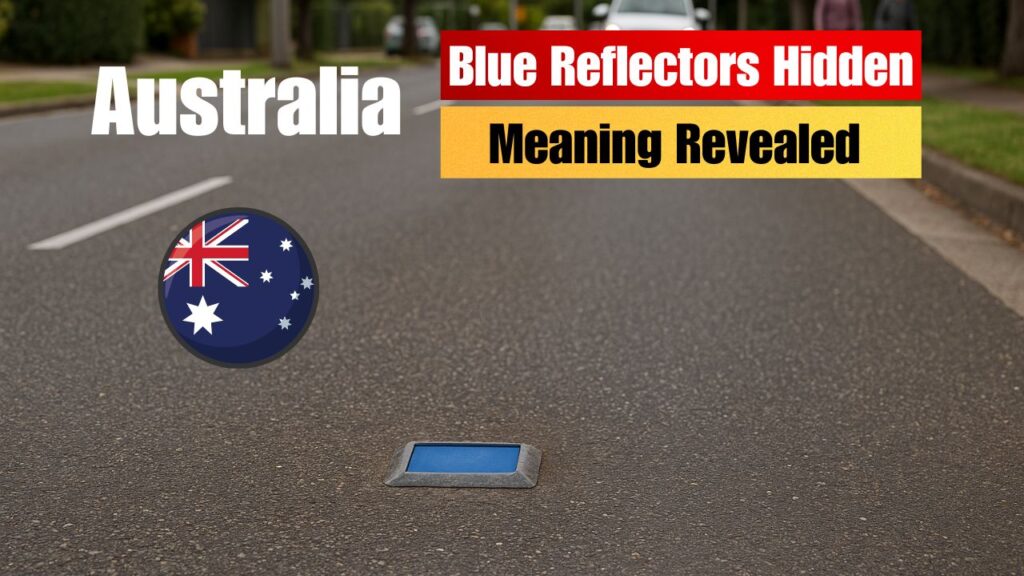If you’ve driven around Australia at night, you may have noticed small blue studs glinting on the tarmac and wondered what they mean. These blue road reflectors are not decorative — they carry a hidden meaning that helps keep road users safer after dark, especially on rural and coastal routes. Understanding them is part of being a responsible driver on Australian roads, and a quick explanation can save confusion and improve everyone’s safety on quieter stretches where signs and streetlights are sparse.

What do the blue reflectors signify on the road?
In practical terms, the blue studs are a form of cat’s eyes adapted for specific warnings: they act as lane guidance and subtle hazard markers when conventional signs are less effective. Because they are highly reflective, they dramatically improve night-time visibility for approaching drivers, especially under vehicle headlights. The blue tone is chosen as part of a broader colour coding system used in many Australian states to differentiate between general lane markers and points that require more caution — for example, curves, narrow bridges or changes in road alignment.
Where in Australia are these blue markers typically used?
Blue reflectors are commonly found in high-risk areas where extra visual cues are needed. You will often see them near bridge approaches, on sharp bends, and along stretches that run close to water or cliffs — think coastal roads where wind and spray can make driving hazardous. They also appear in low-light conditions such as underpasses or unlit rural highways, serving as a passive but reliable guide when other infrastructure is limited or temporarily obscured.
How should drivers respond when they see blue studs?
Spotting a blue stud calls for a calm, measured reaction. It’s sensible to reduce speed slightly and prepare to adjust your line — not to overreact. Avoid abrupt maneuvers like avoid sudden braking, because that can cause hazards for vehicles behind you. Instead, gently align with the road and follow lane markers while you increase vigilance for oncoming traffic, cyclists or pedestrians who might be harder to see at night in the same area.
Safety tips, maintenance notes and common myths about blue reflectors
A few quick practical tips help you get the most out of these markers: treat them as a cue to scan ahead for hazards, keep headlights clean for optimal reflector performance, and remember that heavy rain or debris can reduce their effect. There’s also some myth-busting to be done — blue studs are not a sign to stop or a legal prohibition, they’re a warning. If a reflector is missing or damaged, contact the local authority; many maintenance crews and local councils respond quickly when the public report damage, because reflector integrity matters for community safety.
| Reflector Colour | Common Meaning | Typical Locations | Recommended Driver Action |
|---|---|---|---|
| Blue | Hazard/landmark indicator | Bridge approaches, sharp bends, coastal/remote roads | Reduce speed, follow lane alignment |
| White | Lane divider | Urban and rural lane lines | Maintain lane, allow overtaking where safe |
| Yellow/Amber | Left-side edge or median warning | Medians, roadworks, temporary diversions | Exercise caution, follow temporary signage |
| Red | Wrong-way or hazard | End-of-road, no-entry points | Stop and reassess direction |
FAQ 1: Do blue reflectors mean “do not pass”?
One-line answer: No — blue reflectors are a warning or guidance indicator, not a strict “do not pass” sign.
 Major Australians banks face growing demands to repay unfair fee charges - Who could be eligible
Major Australians banks face growing demands to repay unfair fee charges - Who could be eligible
FAQ 2: Are blue studs legally enforceable road signs?
One-line answer: No — they supplement signage and road markings but are not standalone legal orders.
FAQ 3: What should I do if a blue reflector is missing?
One-line answer: Report it to the local council or road authority so maintenance crews can inspect and replace it.
FAQ 4: Do all Australian states use the same reflector colours?
One-line answer: Most states use similar colour conventions, but local variations exist, so stay informed about state guidelines.






